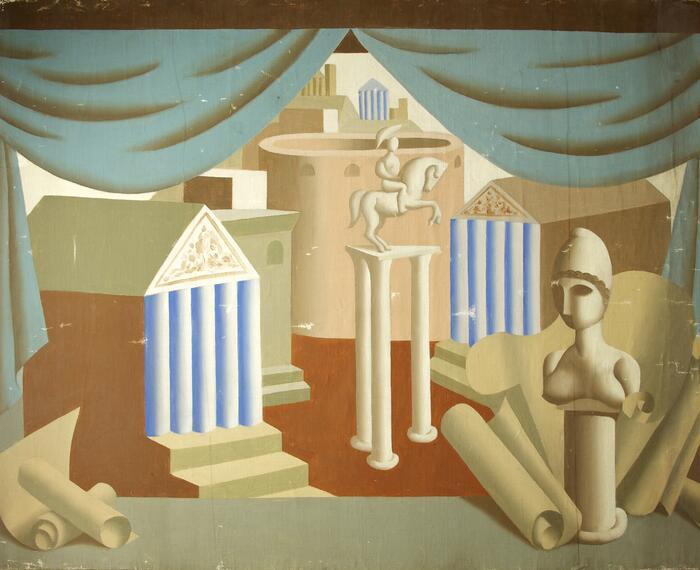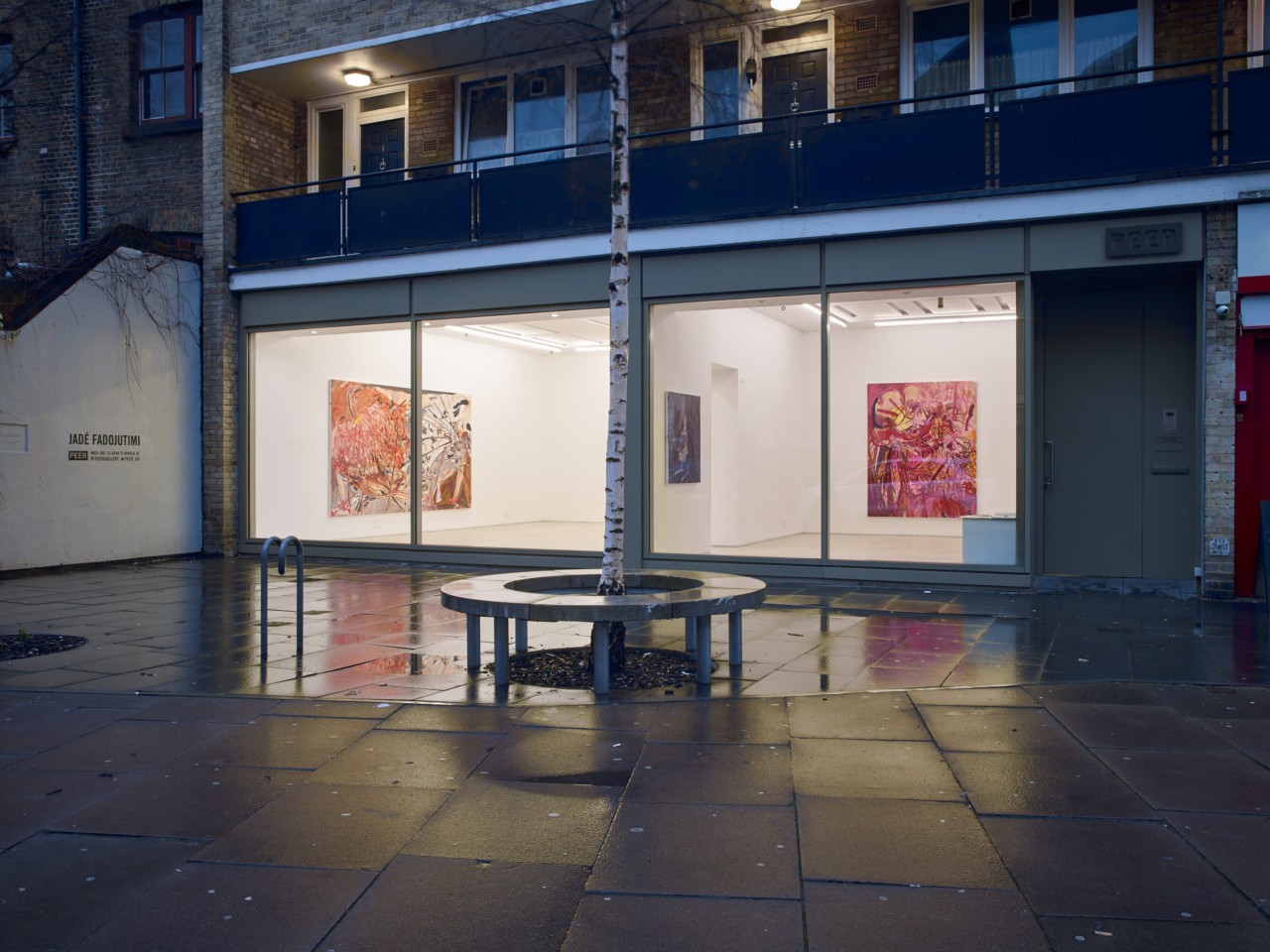


Installation view of ‘Jadé Fadojutimi: The Numbing Vibrancy of Characters in Play’. Photo: Stephen White
London-born Jadé Fadojutimi could be considered to have had the ideal formation for a painter: a BA at the Slade followed by an MA at the Royal College of Art. She graduated in summer 2017. The artist cites Varda Caivano and Phoebe Unwin among her points of reference, but she has created a lexicon of form and mark-making that is emphatically all her own. The work is exhilarating for its formal sophistication and assurance of painterly technique, but the first impression one has is of the sheer sensation of energy that it generates.
Rarely does one encounter paintings with the kind of palpable kinetic dynamism of Fadojutimi’s. I’m pirouetting the night away, 2019 seems to create a swirling vortex of colour in inky cobalt blues, with flashes of orange so luminous they put one in mind of stained glass. The lower half of the canvas has an architecture of thick, dark brushstrokes – one reads the rapidity of execution, the pressure on the canvas in their physicality. Paint is sometimes forced off the edge of the canvas. And across and over these successive veils of semi-transparent paint, the handle of the paintbrush has been used to incise another layer of gestures.
In interview the artist has said, “the paintings are me” – and I think it is useful to have an awareness of the fact that she is still in her twenties. In order to avoid falling into assumptions, we should remember that the way someone of her generation approaches the proposition of painting is out of a cultural framework specific to the moment she has lived in. In thinking about the vast history of painting pressing at her back, which with disarming honesty she describes as “quite tormenting”, Fadojutimi looks for a critical frame for her own work rather than a source for it.
As a teenager Fadojutimi developed a passion for Japanese animé. The attractions of the genre were the escapism – counterintuitively perhaps, into zones of trauma and tragedy – as well as the aesthetic. A trip to Japan also embedded a love of the culture of cosplay that originated in the Harajuku district of Tokyo. But the trip also precipitated a crisis of identity in the artist since, for all her research and admiration for Japanese culture, the confrontation with her otherness from it was made unavoidable by actual contact.
A compelling writer as well as an accomplished painter, Fadojutimi’s writing is peppered with reference to emptiness, hollowness and to herself as an “empty shell”. In a discourse with unmistakable existentialist overtones, the artist’s concern is seemingly with the construction of identity to fill this void. So the “characters in play” of the show’s title seem to refer to alternate personalities, or fragmentary characteristics. Some of which she seeks to suppress, others confront her with the reality of her inescapable character.
“You fascinate me, but you’re not me. You distract me by gifting the illusion of a character that molds my existence into the very predator that consumes me. A time will come again when I can walk beyond these pleasures and land in the world that the window once embodied.”
Windows recur as a focal point in Fadojutimi’s writing and conversation. She loves to sit and look out of the window more than she wants to go outside. The window offers her an image that synthesises her own reflection with the world beyond. The paintings slither between expressive abstraction and figuration: in the largest work here, Without our heads, we prevail, 2018, two pairs of stripe-stockinged legs bestride the canvas. In place of a body, a thatch of marks like a puffball hovers in space, adorned by one of the little bows that are lifted straight out of animé fashion. The palette of brick reds, flesh pinks and powder blues trigger thoughts of de Kooning somewhere in a recess of my brain. The composition positively crackles with raw energy.
She’s buried to the chin, 2019, is an altogether more brooding work. Diaphanous curtains of paint overlap to create a ground on which a loosely sketched three-dimensional form stands haltingly. A cluster of shapes gather in the void where the curtains part. While seemingly much simpler a composition than the larger works here, the painting is profoundly expressive of atmosphere and mood.
Though the show only consists of six canvasses, they give an ample insight into the concerns and power of this young artist. PEER’s two gallery spaces also offer the perfect proportions and pacing for this first institutional solo show. Look out people, I think we are going to hear a lot more about Jadé Fadojutimi.
Caroline Douglas
Director
PEER, 97-99 Hoxton St, Hoxton, London N1 6QL. Open Wednesday-Saturday 12.00-18.00. Exhibition continues until 6 April 2019. www.peeruk.org